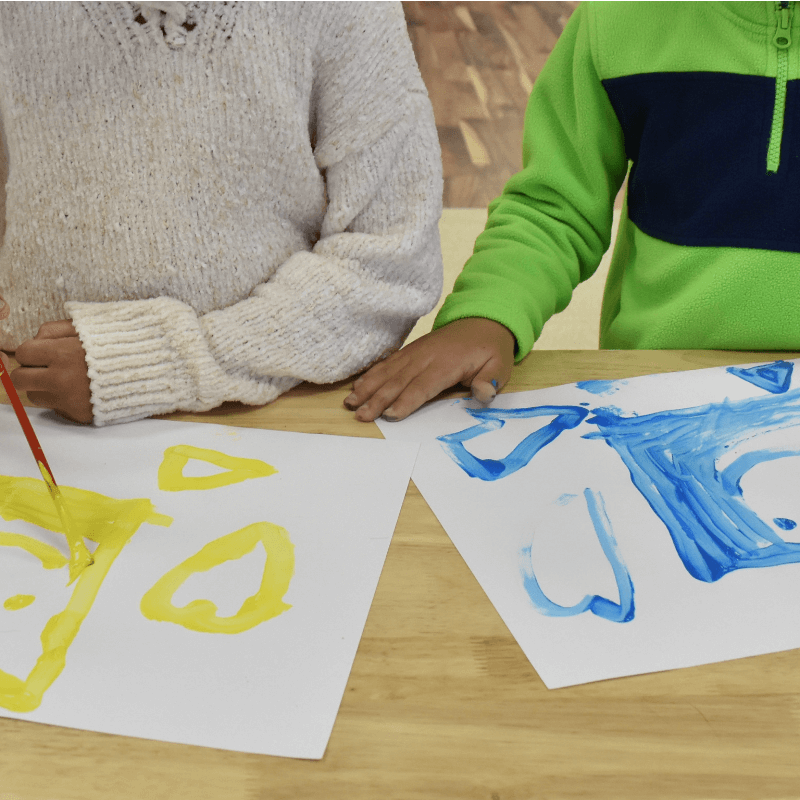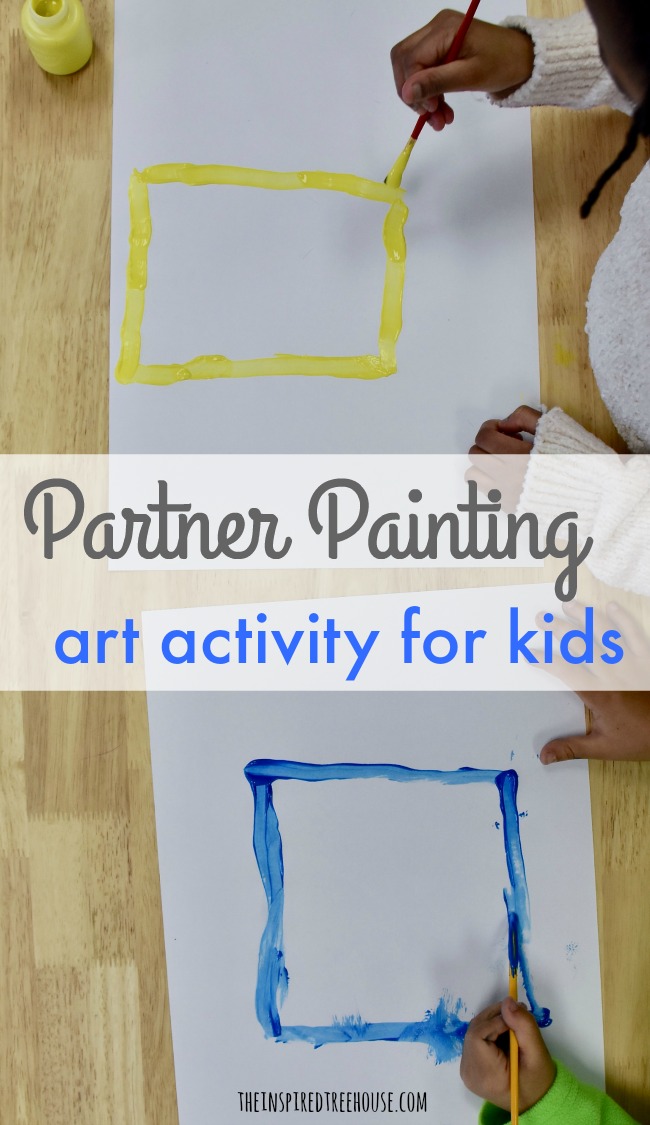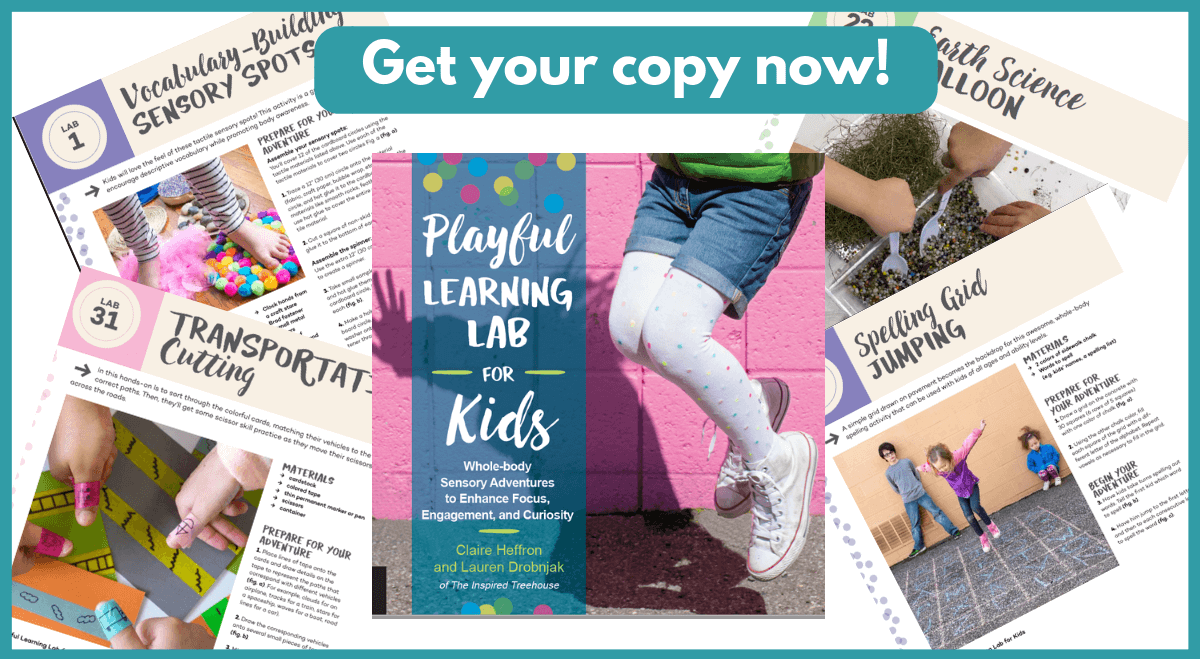Want to make a friend and a masterpiece? Cooperative art activities for kids are perfect for getting little ones to work together while also targeting visual motor and fine motor skills.
*This post contains affiliate links. Read more.
This fun cooperative art project is designed to encourage partners to team up and make matching paintings by following one another’s lead.
This activity is straight from the pages of our book, Playful Learning Lab for Kids! Get your copy today and learn how to use this activity as part of an art lesson that also targets social skills. In the book, you’ll find ways to maximize the sensory experience in this activity and other fun ways to use this activity for learning.
 What you’ll need:
What you’ll need:
-Paint
-Crayons or markers
-Drawing paper and easel or marker boards or clipboards
What to do:
Set two large pieces of paper side by side on a table or clip them next to each other on a large easel. Tell one partner that he is the leader and instruct him to paint a picture, one step at a time. Instruct the other partner to follow the leader, painting the exact same shapes and lines in the same places on his paper. Set a timer for a few minutes to indicate when that partner’s turn is over and then switch.
How to change it up:
–Position one child at the easel in front of his classmates. Give the rest of the classmates marker boards or clipboards with paper and a crayons. The child at the easel acts as the leader, drawing shapes and lines as the rest of the children imitate what they see on their boards.
-The teacher acts as the leader, drawing more complex pictures, or putting several simple shapes together to make a picture (e.g. a sailboat, a sun, a car).
-Take the visual cue out of the equation and allow the leader to cue his partner (or the class) verbally for what to paint next.
For Virtual Sessions:
First, act as the leader, with your camera pointed at the paper so the child can see what you’re drawing. Have the child imitate your drawing on his or her paper. When you’re finished, have the child hold up their drawing and compare their final product with yours. Can they help identify any differences between the two drawings?
Try drawing shapes or forming letters to work on prewriting and handwriting skills.
Then, allow the child to act as the leader. Have them point their camera to their own paper and draw a picture as you imitate the drawing on your paper off-screen. Compare the two drawings when you’re finished to find any differences.
Try making purposeful “mistakes” in your drawing to see if the child can identify them.
Skill Areas Addressed:
Cognitive skills, fine motor skills, grasp, midline crossing, prewriting skills, social skills, strength, visual motor integration, visual perceptual skills


Latest posts by Claire Heffron (see all)
- Cute Zipper Bags for Therapists - April 18, 2024
- Fairy Tale Games and Toys - April 12, 2024
- The Best Emotional Regulation Books for Kids - April 8, 2024



[…] 6 – Mirror, Mirror 7 – An Island in the Sun 8 – Who’s Missing? 9 – Partner Painting 10 – Visual Motor Quick […]